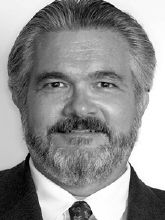Invisalign Treatment of Class III Malocclusion with Lower-Incisor Extraction
Back to the Future
Here at JCO, we make it part of our mission to bring new ideas to the practice of orthodontics. Articles on temporary anchorage devices and cone-beam technology that would have come across as science fiction in the not-toodistant past are now commonplace in the orthodontic literature, particularly this journal. Many practitioners, including me, are always excited to try out new techniques, new appliances, and new developments in all areas of the specialty. We pride ourselves in being on the cutting edge - indeed, JCO has a regular department with just that name: "The Cutting Edge".
When it comes to the actual day-to-day, chairside practice of orthodontics, however, there is really very little in the field that is actually new. Other than technologies that are relatively new to the world in general, such as 3D printing and intraoral scanning, we see few submissions representing appliances or mechanics that have never been presented before.
Early in my orthodontic career, I came up with a lot of clinically relevant ideas that I thought would revolutionize the specialty. But whenever I enthusiastically brought one of them to the attention of my first department boss, Dr. Rolf G. Behrents ("Buzz" to everyone who knows him), I was invariably met with a tolerant, paternalistic smile, accompanied by a slow shake of his head. More than once he told me, "If you think you have invented something new, go back and look at a 100-year-old German orthodontic textbook. What's new is old and what's old is new."
Similar articles from the archive:
- THE EDITOR'S CORNER Something Old, Something New November 2014
- THE EDITOR'S CORNER To Bend or Not to Bend April 2013
- THE EDITOR'S CORNER Advice for the Graduate June 2011
Buzz proved to be right most of the time. For example, I remember being excited about the possibility of correcting Class II malocclusions with what I thought was a new device being popularized by Prof. Hans Pancherz: the Herbst Appliance. To be sure, Dr. Pancherz never failed to give credit where credit was due, and he always cited the inventor, Dr. Emil Herbst. Given my excitement over this "new" appliance, I was shocked to find out that Dr. Herbst had introduced it in the early 20th century. As Buzz had promised, it was in a German publication.
Even 25 years later, I still sometimes feel like Buzz's apprentice, going back to the future. Such was the case when I first reviewed an article that appears in this issue of JCO. Drs. Mauro Cozzani, Laura Mazzotta, S. Jay Bowman, and Daniel J. Rinchuse describe the uses of a modest bracket modification that surprisingly few practitioners use nowadays: the vertical slot.
Although the origins of the vertical slot are unclear, it plays a major role in the technique popularized by Dr. P. Raymond Begg (1898-1983), who incorporated it into his earliest brackets. I have always used vertical slots, having learned their applications and advantages in my graduate training program. Benefits include the ability to tie wildly displaced teeth into an archwire in a case that would defy ligation with conventional slots, as well as the opportunity to attach such useful auxiliaries as uprighting and rotating springs, overlay wires, power arms, T-pins, and elastic hooks. Once you incorporate vertical slots into your routine appliance, you will wonder how you got along without them.
Dr. Cozzani and colleagues present a detailed and practical summary of the many applications of vertical slots. I can offer a hearty endorsement of their recommendations, based on almost 30 years of using them in daily practice. Give vertical slots a try in a couple of cases, and I am willing to bet that you will agree with me in endorsing this article. What was old is new, and what was new is old.
RGK


